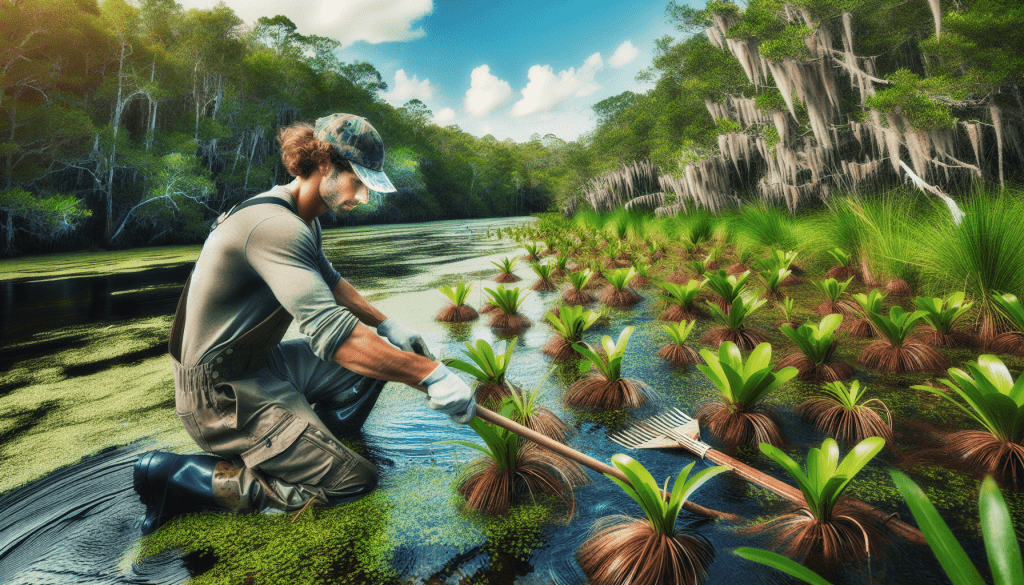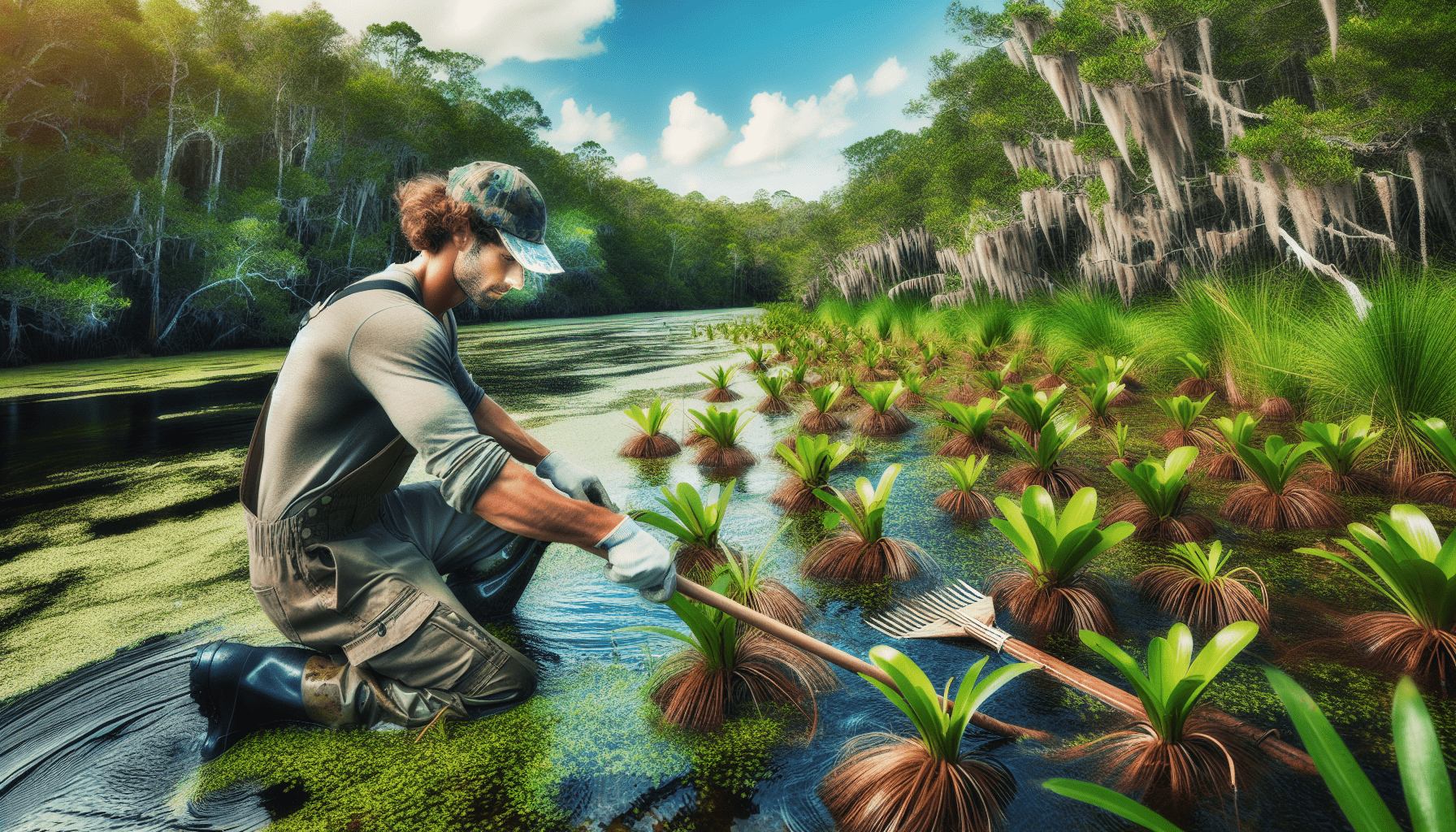In “Most Popular Methods For Eradicating Alligator Weed In Natural Habitats,” you’ll dive into the world of invasive plant management, exploring the most effective techniques used to combat the spread of alligator weed. As you read, you’ll uncover various strategies, from manual removal to advanced biological control methods, each with its own set of advantages and challenges. This guide aims to provide you with a comprehensive understanding of how experts tackle this persistent weed, helping to protect and preserve the natural habitats you care about.
Most Popular Methods For Eradicating Alligator Weed In Natural Habitats
Have you ever wondered how to tackle the persistent problem of alligator weed in natural habitats? This tenacious plant can be a real menace, wreaking havoc on ecosystems and causing headaches for conservationists and land managers alike. In this friendly and informative guide, you’ll discover the most popular methods for eradicating alligator weed, along with insights on effective strategies to keep it under control. Let’s dive in!
What is Alligator Weed?
Understanding Alligator Weed
Before we delve into eradication methods, it’s essential to understand what alligator weed actually is. Alligator weed, or Alternanthera philoxeroides, is an invasive aquatic plant that originates from South America. It’s known for its ability to thrive in both aquatic and terrestrial environments, making it incredibly hard to manage.
Identifying Alligator Weed
Knowing how to identify alligator weed is crucial for effective management. It features:
- Leaves: Long, lance-shaped leaves growing in opposite pairs.
- Stems: Hollow, segmented stems that can float on water.
- Flowers: Small, white, clover-like flowers.
It’s these distinctive traits that help you spot alligator weed in the wild.
Why Eradicating Alligator Weed is Important
Environmental Impact
Alligator weed can significantly disrupt natural habitats. It forms dense mats that shade out native vegetation, alters water flow, and reduces oxygen levels, negatively impacting aquatic life.
Economic Considerations
The costs associated with managing alligator weed can be substantial. Infestations can affect agriculture, clog irrigation systems, and harm fisheries, necessitating continuous and often expensive management efforts.
Human Health Risks
In certain areas, alligator weed can also become a breeding ground for mosquitoes, which bear diseases such as malaria and dengue fever. Addressing the problem can, therefore, reduce these health risks.

Popular Eradication Methods
Now that you understand its impact, let’s explore the various methods for eradicating alligator weed. Each method has its own pros and cons, and sometimes a combination of approaches works best.
Mechanical Methods
Mechanical eradication involves physically removing the plant. It’s labor-intensive but effective for smaller infestations or areas where chemical use is restricted.
Cutting and Removal
Regular cutting and removing of alligator weed can keep it at bay. However, you must ensure all plant fragments are collected, as any leftover can regrow.
Grazing
Grazing by livestock, particularly goats, can help manage terrestrial alligator weed. This method, while eco-friendly, may not fully eradicate the weed but can control its spread.
Chemical Methods
Chemical eradication involves using herbicides. This method can be effective for larger infestations but must be used judiciously to avoid harming non-target species.
Herbicide Application
Common herbicides for alligator weed include glyphosate and 2,4-D. These should be applied to young, actively growing plants for best results.
| Herbicide | Application Rate | Effective Period | Notes |
|---|---|---|---|
| Glyphosate | 1-2% solution | 2-3 weeks | Non-selective; may harm other plants |
| 2,4-D | 2-3 pints per acre | 1-2 weeks | Sometimes used with a surfactant |
Biological Methods
Biological control uses natural predators or pathogens to manage alligator weed populations. It’s a sustainable option that focuses on long-term control.
Alligator Weed Flea Beetle
The alligator weed flea beetle (Agasicles hygrophila) is a known predator that feeds on the plant. It’s effective in warmer climates but less so in cooler areas.
Alligator Weed Thrips
Thrips (Amynothrips andersoni) also prey on alligator weed, damaging the plant tissues and reducing its vigor. They can be a useful supplementary biological control agent.
Integrated Pest Management (IPM)
Integrated Pest Management combines various control methods to achieve the best results. This approach balances environmental impact, effectiveness, and sustainability.
Monitoring and Planning
Regular monitoring helps in early detection and enables timely intervention. Effective planning involves understanding the weed’s biology and choosing the right combination of control methods.
Step-by-Step: Eradicating Alligator Weed
Let’s put theory into practice with a step-by-step guide to eradicate alligator weed:
Step 1: Assess the Infestation
Begin by thoroughly surveying the area to determine the extent of the infestation. Note the size, location, and density of the alligator weed patches.
Step 2: Choose Your Methods
Based on your assessment, choose a combination of mechanical, chemical, and biological methods. For example:
- Small, isolated patches may be managed with cutting and removal.
- Larger areas might require herbicide application.
- Incorporate biological controls to maintain long-term suppression.
Step 3: Implement the Plan
Carry out your chosen control methods. Ensure that:
- Mechanical removal is thorough, with all fragments collected.
- Herbicides are applied correctly, following safety guidelines.
- Biological agents are introduced in suitable conditions.
Step 4: Monitor and Follow Up
After initial treatment, regularly monitor the site for regrowth or new infestations. Follow up with additional treatments as necessary until the alligator weed is under control.

Challenges and Considerations
Environmental Sensitivity
When using chemical controls, be mindful of potential impacts on non-target species and ecosystems. Always follow recommended safety practices.
Persistence and Patience
Alligator weed can be highly persistent. Achieving eradication often requires repeated treatments and long-term management efforts.
Community Involvement
Engaging the local community can enhance your eradication efforts. Educate landowners and stakeholders about the importance of managing alligator weed and encourage their participation.
Regulations and Permits
Ensure compliance with local regulations regarding herbicide use and biological control agents. Obtain any necessary permits before proceeding.
Conclusion
By now, you should have a comprehensive understanding of the most popular methods for eradicating alligator weed in natural habitats. From mechanical removal and chemical treatments to biological control and integrated management, there’s no one-size-fits-all solution. The key is to tailor your approach based on the specific conditions of your site, taking into account environmental sensitivity, persistence, and the need for community involvement. With diligent efforts and a well-rounded strategy, you can effectively tackle alligator weed and help protect the natural habitats we cherish. So, ready to take on the challenge? Let’s get started!
